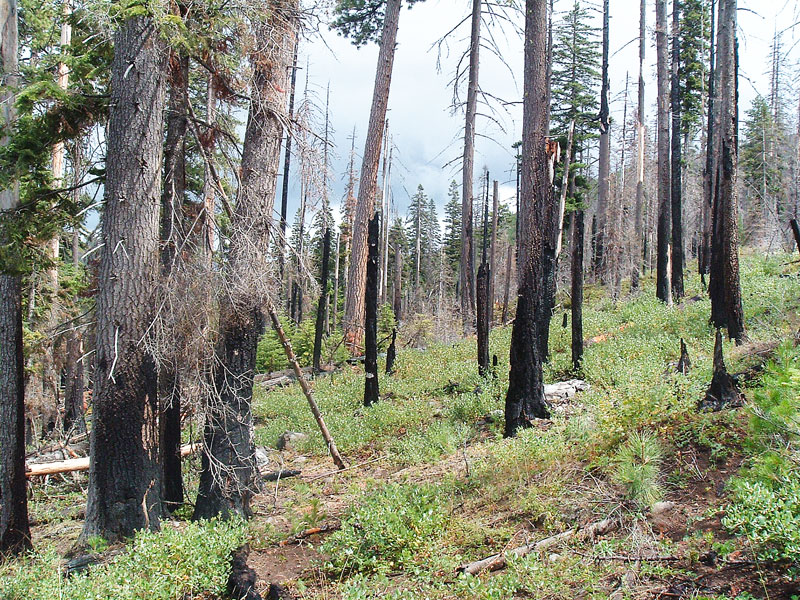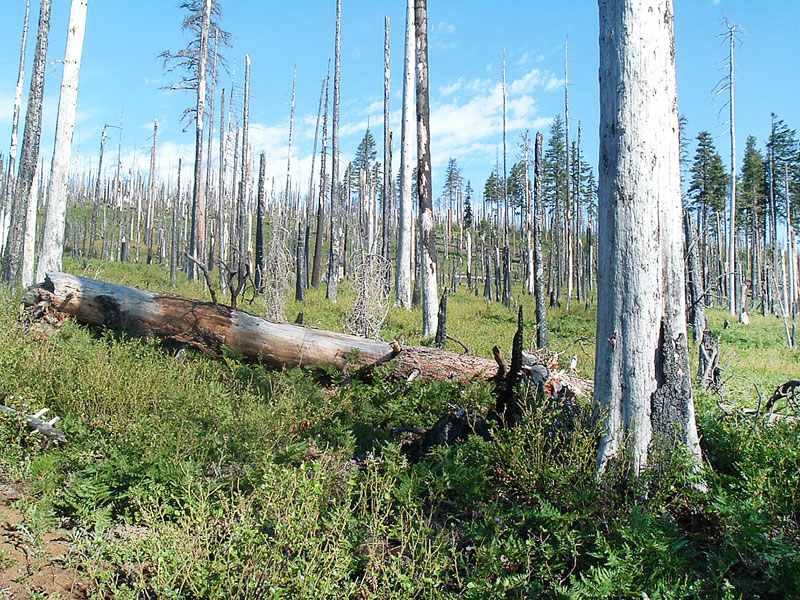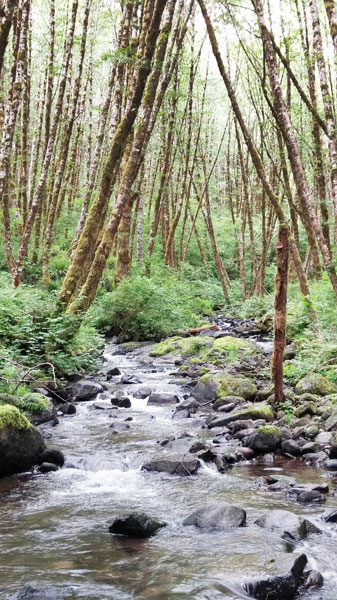Mark Floyd: Warming taking a toll on Oregon
The changing climate is having a significant impact on Oregon, a new report concludes, with the state growing progressively warmer, experiencing more severe wildfires and undergoing a shift of seasons, resulting in less snowpack and lower summer stream flows. The impacts of these changes are becoming significant, researchers say.
“Simply put, the state’s biggest fire years occur when summers are unusually warm and dry,” according to report co-author Philip Mote, former director of the Oregon Climate Change Research Institute, based at Oregon State University.
“Since warm and dry summers are occurring more frequently, we can expect the fire danger to increase as well. At the same time, our hydrology is changing, starting with shrinking snowpack, which in many basins poses a dual threat of increasing flood risk in the winter and ... lower soil moisture and stream flows in the summer.”
Last year was much drier than normal, triggering emergency drought declarations in 11 Oregon counties.
A plethora of wildfires in the western United States in August of 2018 caused Portland and the Willamette Valley to experience some of the worst air quality on the planet. Meanwhile, ranchers in Southern and Eastern Oregon reported significant economic losses from the lack of water.
These results likely are the new norm, not anomalies, say the authors of the fourth Oregon Climate Assessment Report, a synthesis of peer-reviewed scientific studies over the past two years. The legislatively mandated report was produced by the institute.
Not all the news in the report is doom and gloom. One benefit from the warming trend is the longer growing seasons for farmers and home gardeners.
“Our projections suggest the growing season will lengthen most in the Willamette Valley, by as much as two months,” Mote said. “Water availability may still be a concern for some crops, and weeds thrive with higher carbon dioxide levels, but spring is definitely beginning earlier and fall is lasting longer.”
Sea level rise from a warming planet is a global concern. Projections through the mid-century have not changed substantially, but estimates for the maximum plausible sea level rise by the end of the century have increased to 8.2 feet, which would threaten coastal communities around the world.
Recent studies about the eventual rising sea level suggest policy decisions made now will affect cumulative greenhouse gas emissions, which determine how much ice will melt in Greenland and Antarctica over the next several thousand years.
“In other words, our generation is permanently altering the shorelines of the planet, and every decade that we fail to stabilize temperature, we are causing many more meters of eventual sea level rise,” cautioned Mote, who also served as a lead author on the Intergovernmental Panel on Climate Change’s fifth assessment report.
Kathie Dello, associate director of the Oregon Climate Change Research Institute, emphasized the impacts from warming will affect the state in a variety of ways.
“One of the most obvious impacts of climate change has been the surge in fires, even in normally wet forests, like the Eagle Creek Fire in 2017,” Dello said. “The disruptions to local economic activity from fires have become almost routine and regional air quality has suffered, leading to respiratory ailments.”
Both Mote and Dello are associated with OSU’s College of Earth, Ocean and Atmospheric Sciences. In their report, they enumerate several dire predictions about Oregon’s future climate outlook:
1) Oregon is projected to warm by 4 to 9 degrees Fahrenheit by 2100, the amount depending in part on whether global emissions can or can’t be curtailed.
2) Annual precipitation is not projected to change significantly, but more will fall as rain than snow, and streamflows are far more dependent on snowpack than rainfall. In addition, extreme precipitation events are likely to increase by 20 percent in Eastern Oregon, with heavy rainfall potentially resulting in slope instability, landslides and transportation closures.
3) The number of days on which the high temperature exceeds 86 degrees will rise in many Oregon locations. Except for cooler mountain and coast regions, Oregon can expect 30 extra 86-plus days a year by mid-century.
“Perhaps the biggest concern is that rural and tribal communities that are economically disadvantaged and heavily dependent on natural resources are the ones most vulnerable to the changes that are underway,” Dello said. “Efforts made now to proactively adapt to these changes could reduce further damages, but we need to get started now.”
She said, “Proactive management can take many forms, including creating resilient agri-ecosystems, building more robust water markets and managing forests while considering natural resources and wildfire prevention.”
Dello contends reducing barriers for socioeconomic groups most affected by climate change can include rules and policies meant to limit the public’s exposure to the impacts of increasing temperature and fire danger.
“Building community capacity and leadership in frontline communities to participate in the processes where climate-related decisions are made is paramount,” she said. She also called for modernizing crucial infrastructure, including bridges, roads, buildings and culverts, saying doing so could serve to “mitigate climate risk and build resilience into Oregon systems.”










Comments
Don Dix
One glance at the pictures provided explains why fires burn hotter (or so it seems) -- the underbrush buildup. The big Ponderosas have extremely thick bark, which enables them to withstand wildfire. Not so much the buildup!
Clearing the forest floor from underbrush would effectively help control the spread and intensity of wildfires. However, the environmentalists will do anything to prevent proper forest management, solely in the name of the environment. Apparently they would rather see the forests burn than allow a cleanup of dead, dry fuel, which intensifies fires.
And don't forget to send in all your 'expendable cash' (read taxes) so the 'one world government' can change the climate (or it's benefactors and purveyors can retire with a handsome bankroll). A real life 'fools errand'!